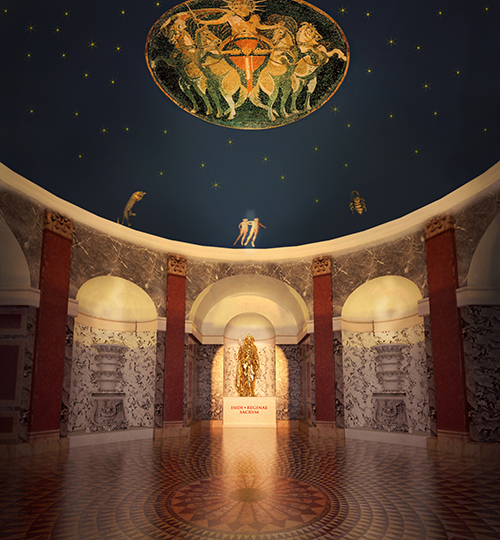Emperor Hadrian's villa near Rome was a vast complex, resplendent with many buildings surrounded by gardens, groves, statues, and water features. Archaeologist Bernard Frischer, an international authority on virtual heritage, describes his remarkable project to scan, model, and digitally restore to their full color and shape representative statues and other sculptures from this World Heritage Site.
Bernard Frischer is a leading digital humanist widely published on virtual heritage, Classics, and the survival of the Classical world.
He received his B.A. in Classics from Wesleyan University and his Ph.D. in Classics from the University of Heidelberg. He taught Classics at UCLA from 1976 to 2004, following which he was Professor of Art History and Classics at the University of Virginia until joining Indiana University in 2013.
Frischer has been a guest professor at the University of Pennsylvania, the University of Bologna, and Beijing Normal University and held the post of Professor-in-Charge of the Intercollegiate Center for Classical Studies in Rome. He is a member of Phi Beta Kappa, a Fellow of the Michigan Society of Fellows, a Fellow and trustee of the American Academy in Rome. He has also won research fellowships from the American Council of Learned Societies and the Center for Advanced Study in the Visual Arts.
From 1996 to 2003 he directed the excavations of Horace's Villa sponsored by the American Academy in Rome, and from 1996 to 2004 he was founding director of the UCLA Cultural Virtual Reality Laboratory. The lab was one of the first in the world to use 3D computer modeling to reconstruct cultural heritage sites. Frischer has overseen many significant modeling projects, including "Rome Reborn," the virtual recreation of the entire city of ancient Rome within the Aurelian Walls. In 2005 he was given the Pioneer Award of the International Society on Virtual Systems and Multimedia. In 2009, he was the recipient of the Tartessus Lifetime Achievement Prize from the Spanish Society of Virtual Archaeology. In 2010-11 he held the Senior Prize Fellowship at the Zukunftskolleg of the University of Konstanz.



